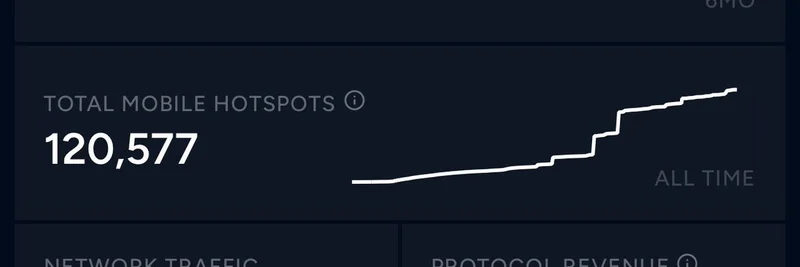Recently, BSC News dropped an intriguing post on X (formerly Twitter) highlighting the future trajectory of Kaspa, a standout Layer 1 blockchain. If you're into crypto and blockchain tech, this is worth paying attention to. The original tweet teases what's next for $KAS, and we've dived into the details to break it down for you in simple terms.
What Exactly is Kaspa?
Let's start with the basics. Kaspa is a proof-of-work (PoW) Layer 1 network – think of Layer 1 as the foundational blockchain where everything starts, like Bitcoin or Ethereum. What sets Kaspa apart is its use of a blockDAG structure (that's Directed Acyclic Graph for blocks) combined with the GHOSTDAG consensus protocol. This setup allows for parallel processing of blocks, meaning it can handle a ton of transactions quickly without sacrificing security or decentralization.
Right now, post its latest upgrade, Kaspa processes up to 10 blocks per second, with ambitions to hit 32 and eventually 100. That's blazing fast compared to many other chains. It uses the kHeavyHash algorithm for energy-efficient mining, supports block pruning to keep things lean, and even has plans for subnetworks to enable Layer 2 solutions. Launched fairly in November 2021 with no pre-mining, it's compatible across devices like Windows, macOS, Linux, and even Raspberry Pi. If you're new to this, PoW means miners solve puzzles to validate transactions, ensuring the network stays secure.
The Crescendo Hardfork: A Game-Changer
Back in May 2025, Kaspa rolled out its Crescendo hardfork – essentially a major network upgrade that everyone has to adopt. This bumped the block rate from 1 to 10 per second, supercharging scalability and efficiency. It incorporated several improvement proposals to handle more transactions smoothly. Developers and the community gave it thumbs up, noting it lays the groundwork for better security and DeFi (decentralized finance) applications. As lead dev Michael Sutton put it, it's all about faster, more reliable transaction handling.
What's Been Happening Since Crescendo?
Since the hardfork, the network has been humming along at 10 blocks per second without a hitch. The community has been buzzing too. In June 2025, the @kaspaunchained X account rebranded to become a more decentralized hub for updates and discussions, amplifying voices from all corners.
Then there's the Kaspa Experience event set for September 13, 2025, in Berlin – a gathering limited to 500 spots, featuring real-world $KAS payments, a product expo, and a $10,000 grant giveaway. Sounds like a fun way to dive deeper into the ecosystem.
On the tech side, we've seen the introduction of Kasia, a fully encrypted P2P messaging system built right on Kaspa. It's open-source, uses Layer 1 transactions for messages, and with just 10 KAS in your wallet, you could send over 500,000 messages thanks to the high throughput. Plus, there's work on verifiable programs (vProgs) for smarter smart contracts and an MCP server for AI agents to interact with the chain.
Key Developments on the Horizon for 2025-2026
Looking ahead, Kaspa's roadmap is packed with innovations to push scalability, security, and usability even further. These are in active research and some are already being integrated into the codebase. Here's the scoop on the big ones:
DAGKnight Protocol: This upgrades the GHOSTDAG consensus to make transaction ordering converge faster, ditching fixed delay assumptions and boosting resistance to attacks. It's based on solid research from 2022 and is slated for the next hardfork.
ZK Layer and L1-to-L2 Bridge: Zero-knowledge (ZK) tech is coming to Kaspa with a dedicated layer and bridge for seamless Layer 2 interactions. This means atomic composability across rollups – basically, transactions that work smoothly between different scaling layers. Expect this by late 2025 or early 2026, enabling more DeFi action.
Reverse MEV Auctions: Miner Extractable Value (MEV) is when miners profit from reordering transactions. Kaspa's twist? Miners can offer kickbacks to users for inclusion or ordering, flipping the script to benefit everyday folks and reduce exploitation in a parallel block setup.
Oracle Voting Mechanism: Oracles bring real-world data (like prices) into the blockchain. Kaspa's version lets miners vote on data in real-time via the high block rate, making it sybil-resistant and secure for DeFi without the usual vulnerabilities.
Why Do These Updates Matter?
In the fast-evolving world of blockchain, these features address real pain points. DAGKnight makes the network tougher against attacks while keeping things speedy. The ZK layer opens doors for scalable DeFi without clogging the main chain. Reverse MEV levels the playing field, and the oracle system ensures reliable data feeds – crucial for things like lending or trading apps.
Overall, this positions Kaspa as a go-to for high-throughput, MEV-resistant DeFi. It's not just about speed; it's about building a robust ecosystem that can handle the demands of tomorrow's decentralized apps.
Wrapping It Up
Kaspa's journey post-Crescendo is exciting, with a clear path toward even greater innovation. Whether you're a developer, investor, or just crypto-curious, keeping an eye on $KAS could pay off. For more details, check out the full article on BSC News. What's your take on Kaspa's future? Drop your thoughts in the comments!
Frequently Asked Questions
What was the Crescendo hardfork?
It was Kaspa's major upgrade in May 2025 that increased the block rate to 10 per second, enhancing overall performance.
What's DAGKnight?
An advanced consensus upgrade for faster, more secure transaction ordering, coming in the next hardfork.
When will the ZK layer launch?
It's targeted for late 2025 or early 2026, bringing ZK rollups and better Layer 2 support to Kaspa.


